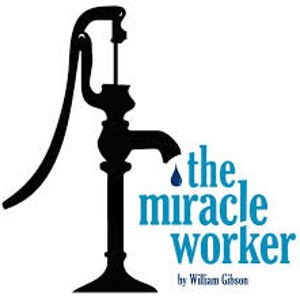
Overview
Synopsis
Helen is a bright, strong, energetic child -- but left both blind and deaf in the wake of an illness as a baby, she is also a feral, frustrated mystery to her exhausted family. Her heartbroken mother Kate is Helen’s best protector, while her half-brother James wants to send Helen to an institution, and her father Arthur Keller, a former Captain in the Confederate Army, is worried for the safety of their new baby. As a last resort, the Kellers send for a governess from the the prestigious Perkins Institute for the Blind, and get Annie Sullivan, a lively and stubborn Yankee girl, barely out of school herself, with the experience of childhood blindness -- now cured, after numerous operations -- and the title of valedictorian her main recommendations. Driven by the demons of her traumatic past, Annie, the unlikely Miracle Worker, fights to reach Helen and bring light to the darkness of her mind. But faced with the well-meaning pity of the Kellers, the curious sneers of James, and the fearful, furious trickery of Helen herself, it will take all of Annie’s patience, creativity, and firmness of spirit to bring about the transformation of Helen, the trapped wild creature, into Helen, the brilliant and communicative child she could become. In William Gibson’s riveting prose, one of the great miracles of the 19th century has become one of the great stage plays of the 20th, as past and present, fact and mere conjecture, are woven together in a thrilling and heart-rending drama. Universal sorrows, family bonds, and the strength of the human spirit are explored in the amazing true story of two remarkable women.
Show Information
Context
William Gibson’s The Miracle Worker as a teleplay for Playhouse 90, an anthology drama series program which aired on CBS in the late 1950s. After receiving an Emmy nomination, Gibson adapted it for the stage. It premiered on Broadway on October 19th, 1959, a the Playhouse Theatre. Starring Anne Bancroft as Annie Sullivan, and Patty Duke as Helen Keller, the cast also featured Torin Thatcher as Captain Keller and Patricia Neal as Kate Keller. The Miracle Worker won the 1960 Tony Award for
to read the context for The Miracle Worker and to unlock other amazing theatre resources!Plot
Act One
Nighttime in the Keller homestead in Tuscumbia, Alabama. In the bedroom of dangerously ill toddler Helen Keller, her parents, Captain Keller and Kate Keller, and the family doctor, have been watching by the side of the crib for many hours, and all of their faces show the weariness of this long vigil. The anxious parents are assured by the doctor that their baby will live. The doctor admits that he doesn’t know exactly what is wrong with Helen, simply that she experienced “acute
to read the plot for The Miracle Worker and to unlock other amazing theatre resources!Characters
| Name | Part Size | Gender | Vocal Part |
|---|---|---|---|
|
Lead |
Female |
Silent |
|
|
Lead |
Female |
Spoken |
|
|
Supporting |
Female |
Spoken |
|
|
Supporting |
Male |
Spoken |
|
|
Supporting |
Female |
Spoken |
|
|
Supporting |
Male |
Spoken |
|
|
Supporting |
Female |
Spoken |
|
|
Featured |
Male |
Spoken |
|
|
Featured |
Female |
Spoken |
|
|
Featured |
Male |
Spoken |
|
|
Featured |
Male |
Spoken |
|
|
Featured |
Female |
Spoken |
|
|
Featured |
Female |
Spoken |
|
|
Ensemble |
Female |
Spoken |
|
|
Ensemble |
Male |
Silent |
|
|
Ensemble |
Either Gender |
Spoken |
Songs
A song with an asterisk (*) before the title indicates a dance number; a character listed in a song with an asterisk (*) by the character's name indicates that the character exclusively serves as a dancer in this song, which is sung by other characters.
Monologues
Scenes
Key Terms
Sorry! We do not currently have terms for this guide.
Videos
Quizzes
Themes, Symbols & Motifs
Sorry! We do not currently have learning modules for this guide.
Quote Analysis
Sorry! We do not currently have learning modules for this guide.
